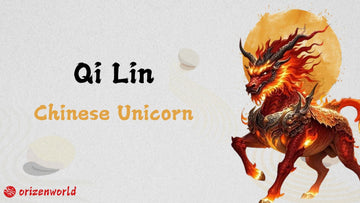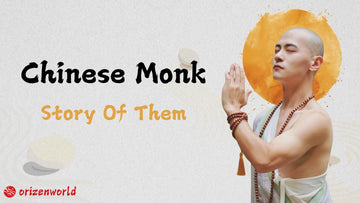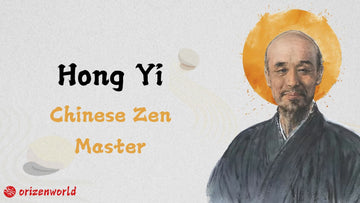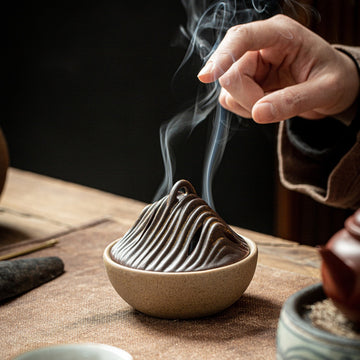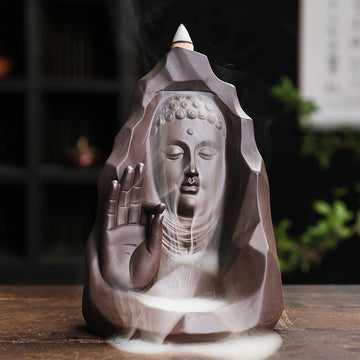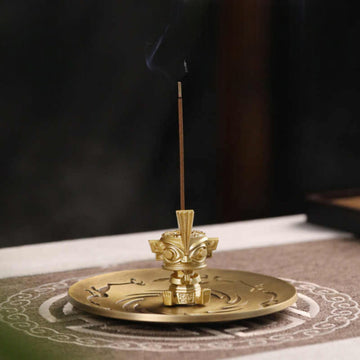When we explore Chinese mythology, one mythical creature that frequently appears is the Qilin (also spelled Kirin). Known for its positive symbolism in Chinese culture and Feng Shui, the Qilin is often seen as a sign of peace, prosperity, and good fortune. Because of its auspicious meaning, many people even include the character for Qilin in their names, hoping to attract its blessings.
But why is this legendary creature considered so magical and powerful? In today’s article, I’ll share with you the fascinating stories, legends, and deeper meanings behind the Qilin.
In ancient Chinese texts like The Commentary of Gongyang (Gongyang Zhuan), the Qilin is often described as a type of deer-like creature. It was said to be “a ju with a horn.” The term “ju” refers to a roe deer, which is unique among deer species because it does not grow antlers. So when ancient texts mention “a ju with a horn,” it strongly suggests that the Qilin was imagined as a horned member of the deer family.
This interpretation aligns well with the structure of the Chinese character “麟,” which includes the radical for “deer” (鹿). The Han dynasty text Records of the Grand Historian (Shiji), particularly in the section about Emperor Wu of Han, records a sighting of a Qilin.
It notes that the Qilin had only one horn, reinforcing the idea that this creature was a one-horned deer.
Later depictions often identified the Qilin as a páozi (狍子), another type of deer. Like the earlier ju, the distinguishing feature remained: a single horn. This one-horned aspect became central to its iconography.
From then on, the Qilin’s form was more or less fixed—a one-horned deer. Because of this unique look, many now refer to the Qilin as the "Chinese unicorn."

The modern depiction of the Qilin often features a beast-like body, a dragon’s head, horse-like hooves, and is covered entirely in scales. This form is known as the “dragon-shaped Qilin.” Today, many Feng Shui Qilin Statues are designed based on this appearance, symbolizing power, protection, and prosperity in homes and businesses.
The earliest known reference to the Qilin appears in the Zuo Zhuan around the 5th century BCE. At the time, ancient people lived in a world full of unknowns and mysteries, leading to a deep reverence for natural phenomena.
Some scholars believe that the Qilin may have originated from primitive totem worship—where certain animals symbolized spiritual beliefs or represented clans. The Qilin, with its features resembling a mix of deer, horse, ox, and fish, reflected animal imagery from the Zhou Dynasty, making it a likely candidate for such early worship.
Legend has it that the Qilin appeared in the garden of the Yellow Emperor and later in the capital of Emperor Yao, symbolizing the rulers’ virtue and divine approval. This connection to wise and benevolent leaders helped elevate the Qilin to a sacred status in Chinese mythology.
From a modern biological perspective, the Qilin would seem like a creature between a mammal and an amphibian—highly unlikely to exist. Yet throughout Chinese history, records of Qilin sightings have persisted.
One famous tale links the Qilin to Confucius: it was said that a Qilin appeared in his yard before his birth, spitting out a jade scroll foretelling his destiny. Later, near the end of his life, a Qilin was captured, and Confucius, deeply saddened, wrote about it in Spring and Autumn Annals, believing it was a sign his teachings would not be fulfilled in his lifetime.

In the Ming Dynasty, explorer Zheng He brought back a giraffe from Africa, which was mistaken for a Qilin. Emperor Yongle was so pleased, he had it painted and shared across the country—showing just how deeply the Qilin legend was rooted in Chinese imagination.
Among all the mythical creatures in Chinese culture, the Qilin holds a special place—its popularity rivals even that of the Azure Dragon, one of the Four Symbols. As mentioned earlier, many Chinese people choose to include the character "麒" or "麟" in their names. But what deeper cultural meanings lie behind this tradition?
One of the main reasons for the Qilin’s enduring popularity is the legendary tale of Qilin Songzi—“Qilin delivering a child.” This story reflects the traditional Chinese belief that having many children brings great blessings. In folk customs, the Qilin is considered a symbol of fertility and good fortune. The term “Qilin'er” or “Liner” is often used to refer to a gifted or auspicious child. Families who desired children would pray to the Qilin, hoping for a healthy and talented offspring.
The Qilin is also viewed as a creature of benevolence and righteousness. In mythology, it is said to appear only in times of peace and when a wise leader is born. A famous example ties the Qilin directly to Confucius. Legend has it that before his birth, a Qilin appeared in his courtyard and spat out a scroll foretelling his destiny as a sage. The phrase “Water spirit’s descendant, destined to be a king without a crown” was inscribed on it.

This powerful symbol is further reflected in folk art. Paintings like Qilin Delivering a Child and Qilin Spitting a Scroll became common in ancestral halls and schools, representing divine blessing and the birth of greatness.
So as you can see, for these reasons, the Qilin remains a beloved figure, deeply rooted in family values and the hope for a bright future.
In Chinese mythology and Feng Shui, the Qilin holds a status equal to other powerful spiritual creatures like the White Tiger and Black Tortoise (Xuanwu). As a symbol of peace, prosperity, and protection, the Qilin plays a significant role in traditional Chinese Feng Shui practices. Its presence is believed to attract positive energy and ward off misfortune.
One of the most important roles of the Qilin in Feng Shui is its ability to promote wealth and career advancement. It is especially beneficial for people working in stable and structured professions such as government officials, administrative roles, or legal departments. Placing a Qilin in the “traveling horse” position (驿马位) of a home or office can help bring opportunities for promotion and recognition.
Another key function of the Qilin is blessing descendants. As mentioned earlier, the popular phrase “Qilin delivering a child” reflects the traditional belief that this auspicious creature can bring talented and virtuous offspring. In this way, the Qilin is often used to symbolize fertility and the continuation of a strong family line.

The Qilin also serves to protect the home and attract good fortune. As a sacred beast, it is believed to guard against negative energy, enhance harmony within the household, and bring in financial luck. Its presence brings a peaceful and auspicious atmosphere.
Finally, the Qilin is known for its powerful ability to neutralize negative energy (化煞). In situations where harmful energies (sha qi) cannot be avoided, placing a Qilin statue can help deflect these forces, ensuring the family’s safety and stability. As a Feng Shui cure, it offers both protection and blessings, making it a favored symbol in many Chinese households.
In traditional Chinese philosophy, Wuxing—the Five Elements theory—plays a vital role in understanding how energy flows and balances in the universe. The Qilin, as a mythical creature rich in symbolism, also interacts with this system. Traditionally, the Qilin is associated with the Earth (土) element, which represents stability, harmony, and nourishment.
However, the element a Qilin belongs to can also vary depending on the material it's made from. For example, a bronze or metal Qilin is considered to belong to the Metal (金) element, while a wooden Qilin aligns with the Wood (木) element. This means that when choosing a Qilin statue or accessory for Feng Shui purposes, it's important to match the material with your own elemental needs or to counterbalance certain energies.
In the Wuxing system, the Earth element—linked with the Qilin—interacts with other elements in both generating and controlling cycles. For instance, Earth generates Metal, and it is controlled by Wood. This dynamic plays an essential role in how the Qilin’s energy influences your home or personal energy.
The Qilin is also closely tied to the Chinese zodiac sign of the Dragon (辰), as both are symbolically connected through the Earth element. However, not everyone is suited to wear or display Qilin symbols. People born under the signs of Ox, Rabbit, Dog, and Sheep are traditionally advised not to wear or place Qilin statues, as these signs may clash with the Qilin’s Earth energy, potentially causing misfortune or financial loss.
If you still wish to wear or use a Qilin despite a zodiac conflict, consider selecting one made from a material that balances your element—such as using a Metal Qilin to reduce Earth’s dominance. Proper selection ensures harmony and protection in your life.
If you're learning about Feng Shui, you've probably discovered that the Qilin is one of the most powerful mythical creatures used to enhance and support your energy profile. Known as a sacred beast, the Qilin can bring protection, prosperity, and harmony when placed correctly. Here are some practical suggestions on how to position Qilin statues for optimal Feng Shui effects.
Proper Placement in the Home or Office:
Main Entrance: Place a pair of Qilin near the front door, facing outward. This helps block negative energy (sha qi) from entering and enhances wealth luck for the household.
Study or Office: Position a Qilin (or a pair) on your desk or in the Wen Chang position (scholarly direction), facing the door. This is ideal for career growth and academic success.
Wealth Position: To attract prosperity, place a pair of Qilin in your home’s financial corner.
Traveling Horse Direction (驿马位): For career advancement or frequent travel, place Qilin here to promote smooth progress.
Bedroom: A Qilin in the bedroom symbolizes fertility and can help those seeking to have children.
Living Room (White Tiger Position): Place Qilin in this area to neutralize negative energy and protect the household.
Ideal Materials:
Bronze, jade, or ceramic Qilin are commonly used. Each material has unique energy—bronze for protection, jade for harmony, and ceramic for balance.
Male and Female Pairing:
Always place the male Qilin on the left and the female on the right (as you face them). This balances Yin and Yang energy.
With proper placement and intent, the Qilin can become a powerful Feng Shui ally for wealth, protection, and family harmony.
While Qilin statues are powerful Feng Shui tools, incorrect placement can weaken or even reverse their positive effects. One common mistake is placing Qilin directly on the floor or in unclean areas such as the kitchen or bathroom. These spaces are considered impure in Feng Shui, and placing sacred objects like the Qilin there is seen as disrespectful and inauspicious. Always place Qilin on a clean, elevated surface such as a table, shelf, or dedicated altar.
Another key taboo is using a Qilin statue that has not been blessed or “opened” (开光). An unopened Qilin lacks spiritual energy and cannot effectively ward off negative forces or bring in luck. For protection and energy activation, it’s best to use a statue that has been properly consecrated by a trusted master or temple.
Avoid placing Qilin on windowsills or outside the window. The Qilin is a sacred and noble creature, and placing it in unstable or outdoor positions shows a lack of reverence. This can reduce its protective strength and may even attract unwanted energies.
Lastly, it’s important to understand that the Qilin is a righteous beast that favors kind-hearted, virtuous people. Those involved in unethical businesses—such as gambling, adult industries, or illicit trades—should not place Qilin statues in their homes or offices, as this goes against its pure nature. When used appropriately, Qilin can attract wealth, dissolve bad luck, and promote harmony. But misuse may bring more harm than good.

